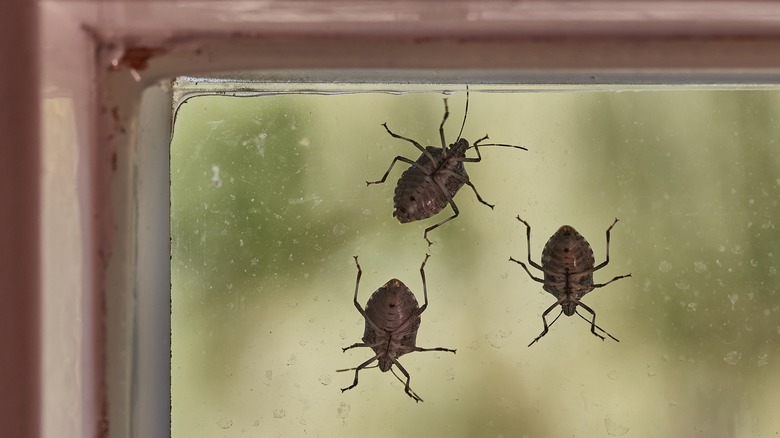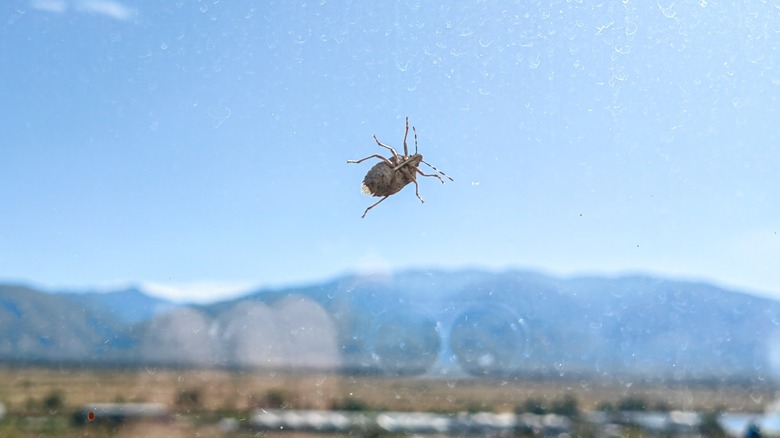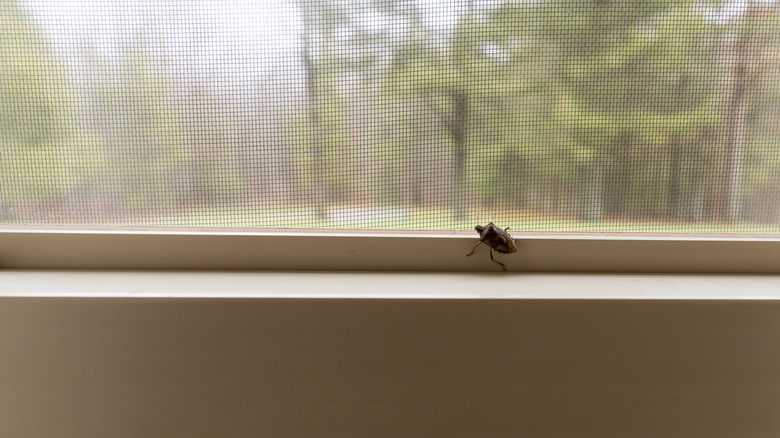Your Gorgeous Natural Lighting May Be The Reason You Have Stink Bugs
Stink bugs are most active during May through September, but those pesky insects can find ways to stick around during winter. To make matters worse, stink bugs will find a way to enter any accessible home. They're attracted to any accessible and well-lit entryway, whether it's the cracks of our doors or the light that peeks through our windows. With that being said, what if we told you there was a solution to their home invasion? All it involves is a little more knowledge on light, plastic seals, and some pest control.
As winter commences, stink bugs are adamant on finding a warm place to squat. In fact, you may have already tried the two-ingredient repellent for stink bugs or wondered what's attracting stink bugs to your home in the first place. Believe it or not, the answer may be in the interior lighting you've grown to love. Thankfully, however, there are a few ways to prevent and get rid of stink bugs before they end up cohabiting in your home. Let's dive in.
Why are stink bugs attracted to light?
There's a reason these invasive brown bugs have always fascinated scientists and the answer is in their attraction to light. Insects are traditionally attracted to light due to its chemical triggers, capturing their attention as a sign of warmth and inevitably bringing them closer to homes. More specifically, stink bugs prefer visual and chemical cues that come in the form of UV black light or lingering pheromones. Any source of blue light — which typically comes in the form of sunlight — is also best to avoid having, meaning drawing the curtains when it's hot and avoiding leaving windows open.
Stink bugs are also prone to certain habits depending on their geographical region, which is likely the cause of their attraction to light. To make matters worse, our homes can capture natural light better than any open space. During fall and winter, pheromone-baited traps are typically used to lure and capture stink bugs since light isn't as abundant during those seasons. During spring and summer, scientists revealed that stink bugs responded better to light than pheromones due to excessive sunlight. Depending on your geographical region, decide if it's the best time to capture stink bugs through natural lighting vs. pheromone-baited traps that can be bought in-store.
How to get rid of stink bugs
Fear not — a solution is here. If you haven't faced a stink bug invasion yet, there are a few preventative ways to ensure they don't reach your home. To prevent an infestation of stink bugs and other pests, homeowners should inspect their household for an excess of light. For example, turning off the porch light, closing window blinds, and relying on artificial lighting as much as possible. If there are no stink bugs in sight, use a plastic seal (like saran wrap) to cover any cracks in windows or doors. Stink bugs can work their way through small crevices, meaning that sealing entryways can help keep them out. Once these bugs notice that your household isn't as abundant in light as they like, they're likely to leave you alone.
If you're already faced with a stink bug invasion, you may use sunlight to lure and exterminate a small number of bugs. Stink bugs are prone to falling when they feel threatened. Since stink bugs are relatively small creatures, they can also be swept or vacuumed (to avoid any foul smell). If none of these options feel viable to you, an exterminator is your next best bet. Pest control can exterminate large groups of bugs while adding preventative measures to ensure the safety of your home.


